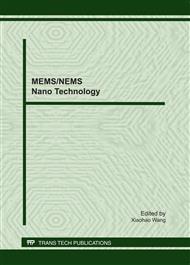p.297
p.301
p.305
p.311
p.316
p.320
p.327
p.331
p.336
Study of the Microfluidic-Immunoassay Chip used to Capture Cancer Cells
Abstract:
A microfluidic immunoassay chip that can selectively and specifically capture cancer cells was demonstrated. To realise the functionalization of microfluidic chip, using EDC crosslinking method, c-Met (hepatocyte growth factor receptor) was covalently linked to the channel surface of chip which was processed by means of MEMS technology. Then the functionalized immunoassay chip could be employed to capture the HepG2 cancer cells that pass through the channel. The flushing flow-rate was optimized. By counting the number of cells in the channels using the microscope and evaluating the capture efficiency effectively, in the system, the capture efficiency can reach 64.2%.
Info:
Periodical:
Pages:
316-319
Citation:
Online since:
June 2011
Authors:
Keywords:
Price:
Сopyright:
© 2011 Trans Tech Publications Ltd. All Rights Reserved
Share:
Citation:


